Wiring a 100-amp sub panel from a 200-amp main panel can be an intimidating project, but the task is simpler than it may seem. Follow this ultimate guide to wiring and you’ll soon be taking control of your electrical system safely and effectively! Our comprehensive article contains helpful tips such as how to select the right breaker for your main panel, connecting wires between panels, and what size wire to use. In short: with this guide, you’re guaranteed success in wiring your 100-amp sub panel from your 200-amp main panel.
How a Subpanel Works
Subpanels are used when more circuits need to be installed than what the standard wiring in the home can handle. A subpanel may be necessary if an old Main Service Panel needs to be updated, or if an addition has been built onto a house and requires new circuits that exceed the capacity of the original Main Service Panel.
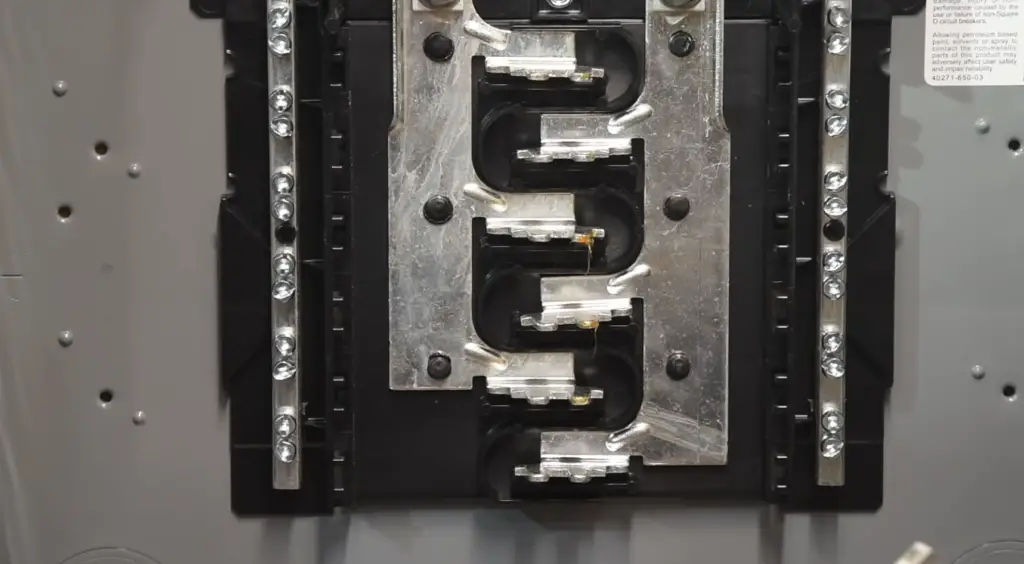
When installing a subpanel, it is important to ensure that no single breaker in either panel exceeds its load capacity for any given circuit. The breakers in the Main Service Panel will feed power to the subpanel. The circuit breakers in the subpanel are then used to provide individual circuit protection and regulate the flow of electricity to various parts of a building, such as an addition or finished basement.
It is important that all wiring from a main service panel to a subpanel be done with adequate sizing and connections, according to local codes, using appropriate materials and techniques. Furthermore, special attention must be given when it comes to grounding for both the main service panel and the subpanel. First and foremost, check with your local code enforcement agency before beginning any electrical work. An experienced electrician should also be consulted for further advice on installation procedures and advice on proper safety protocols. [1], [2]
How a Subpanel Is Connected
Now that you know what a subpanel is, let’s discuss how one is connected. Before proceeding with this part of the project, you should be aware of all local codes and regulations regarding electrical work.
Run a feeder cable from the main panel to the subpanel
The first step in connecting a subpanel is to run a feeder cable from the main panel to the subpanel. The size and type of cable you need will depend on the amperage rating of your breaker and the distance between panels. It’s important to use copper wire rated for outdoor use, as this will provide maximum safety and protection against power surges or outages. You should also be sure that all wires are properly secured and fastened throughout their entire length, according to local codes and regulations.
It’s crucial for the cable to have a wire gauge sufficient to the amperage of the subpanel breaker you’re installing. If you’re ever unsure, consult an electrician or refer to the manufacturer’s guidelines.
Wire the feeder cable to the subpanel and ground bar
Once you’ve run the feeder cable from the main panel to the subpanel, it’s time to wire it up. You’ll need to attach two hot wires from the feeder cable to the lugs on the hot bus bars in the subpanel, the neutral wire to the neutral bus bar, and the bare copper grounding wire to the grounding bus bar.
Wire everything to the main panel
The next step is to wire back from the subpanel to the main panel. You’ll need to attach the hot feeder wire to a new circuit breaker (in our case a 200-volt one). Once that is done, connect the neutral and ground wires from the feeder cable to the corresponding bus bars in the main panel.

Lastly, snap the feeder breaker into the main panel (inside an open double slot), secure all wires and you’re done. Congratulations! You’ve successfully wired a subpanel to your existing electrical system. [1], [2]
Safety Considerations With Subpanels
Before beginning your project, it’s important to consider the safety issues associated with wiring a subpanel. Many of these can be addressed through proper planning and the use of qualified professionals.
Always disconnect the power supply
It’s also a good idea to use ground fault circuit interrupters (GFCI) whenever wiring a subpanel. This type of device can help protect you and your home from potentially hazardous electrical currents. Additionally, make sure to install all wiring correctly according to local building codes and the manufacturer’s instructions.
Avoid touching wet and metal parts
When wiring a subpanel, always avoid touching wet or metal parts. You should also make sure to wear safety glasses and insulated gloves whenever dealing with electrical components. Additionally, when connecting wires, be sure to use the correct gauge for the job. Wiring that is too large or small can create dangerous situations. Finally, never attempt an electrical project if you do not have the necessary experience or knowledge. It’s always best to hire a qualified electrician to complete any work related to your subpanel.
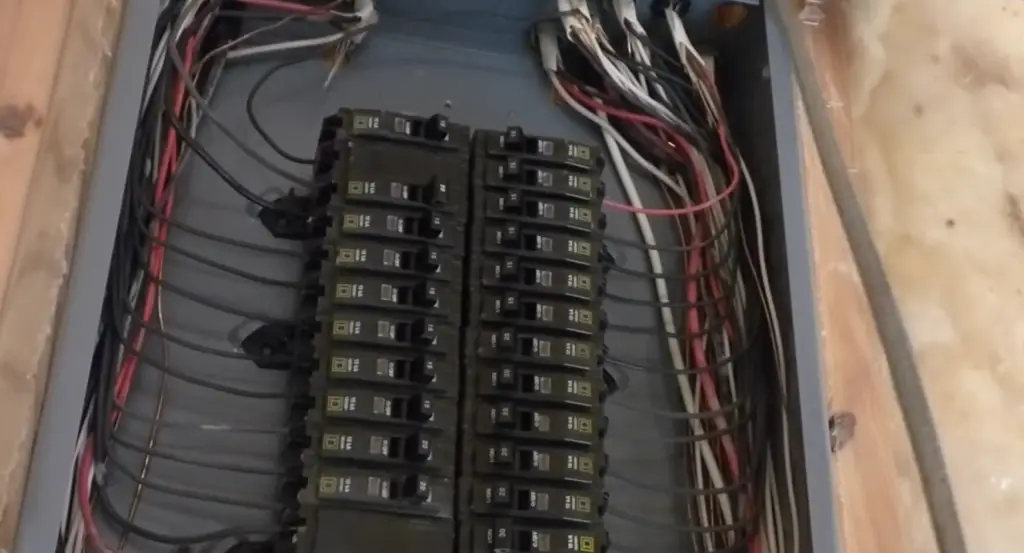
Always read the memorial beforehand
Before beginning any electrical project, it’s important to read the manufacturer’s instructions and adhere to all safety regulations. This will help ensure that you are following the proper protocols and using components of the correct size and material. Additionally, always ask a qualified electrician for assistance if you have any questions or need additional help with your subpanel installation. Doing so can save time, money, and potentially even lives in the event of an accident. [3]
Capacity Issues With Subpanels
Knowing how to wire a subpanel is obviously important but so is using the right size panel. After all, if you don’t have enough capacity in your main panel to power all of the circuits that will be running through the subpanel, then it does no good.
Firstly, the subpanel itself must have an appropriate amperage capacity for the circuits and area you are servicing. When determining the size of a subpanel, you need to look at the total amperage load for all of the circuits that will be in it.
For example, if a subpanel is serving a kitchen, which will have appliances such as the refrigerator and stove plugged into it, then you need to calculate the amperage of those two appliances. The same goes for any other circuits within the subpanel – add up all of their individual amperage load requirements to get the total amperage capacity needed in the subpanel.
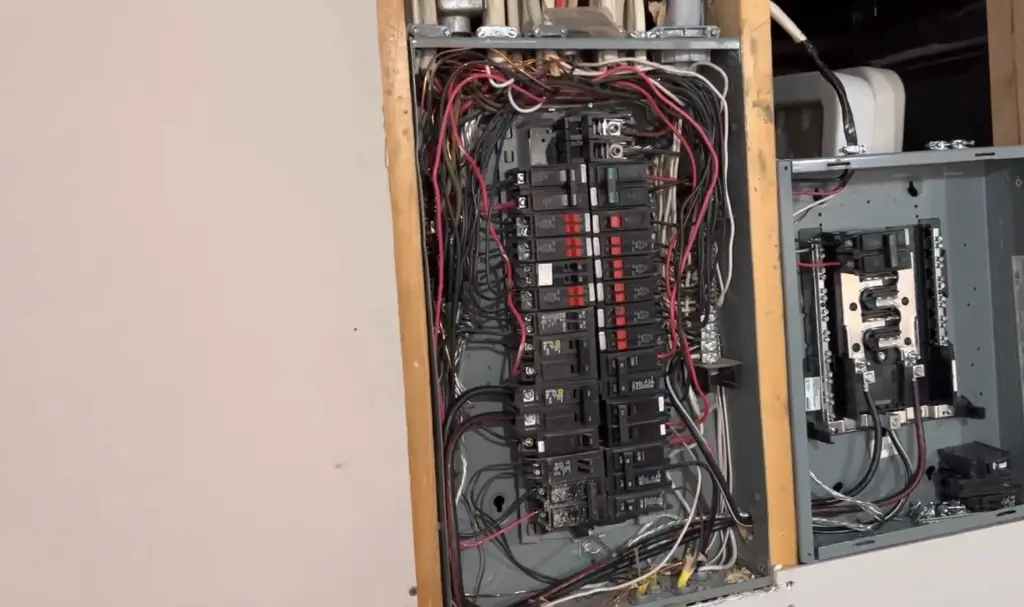
Next, you’ll need to consider the size of your main service and ensure that it will be able to supply power for the subpanel. The amperage of your main service will determine the maximum capacity that can be connected to it – you cannot connect a subpanel with an amperage higher than what your main service is rated for.
If you have an older, main service of 60-100 amps you will need to upgrade it first before you can use a subpanel of any size. However, if your main service is 200 amps or higher, then the subpanel will be limited to 100 amps maximum.
You will need to calculate the loads of the circuits to be connected to the subpanel and pick a panel with an appropriate amperage capacity that is equal to or higher than your total circuit load. NEC has plenty of information on the sizing of panels and circuits, so make sure to consult it before wiring a subpanel.
As with all electrical work, it’s always best to consult with a licensed electrician who can assess your current setup and make sure that everything is correctly sized and wired up safely. With their help, you should have no problem wiring a 100-amp subpanel from your main panel to serve additional circuits in whatever area you need them for. [1]

FAQ
What size sub panel can I install off a 200 amp service?
The maximum size of the subpanel is generally determined by the amperage rating on the main panel. Generally, you can install a 100-amp subpanel off of a 200-amp service. This is because the total amount of current that will flow through both panels should not exceed 200 amps at any one time.
However, to ensure safety, you should always check the maximum amperage rating of your wiring and circuit breakers. The National Electrical Code (NEC) requires that all interior circuits be wired with a minimum of 14-gauge copper or 12-gauge aluminum wire. This is because higher current flows require heavier gauge wires that can safely handle the increased amperage.
You should also check your local building codes to ensure that you are in compliance with all applicable regulations. Additionally, it is important to keep in mind that if you install a subpanel with a rating greater than 100 amps, you will need to upgrade the main panel and its wiring as well. This can be a costly process, and it is important to plan ahead for any upgrades you may need.
Can you put a 100 amp subpanel on a 200 amp main panel?
Yes, you can install a 100-amp subpanel on a 200-amp main panel. In order to do this correctly, it is important that you follow the instructions and safety guidelines for wiring a 100-amp subpanel in your home or business. You will need to use the correct size wire, breaker and conduit as well as install an appropriate ground fault circuit interrupter (GFCI) at the main panel location. Make sure all connections are tight and secure before powering up the system. It is also important to remember to turn off electricity from both breakers when making connections between them.
When wiring the subpanel, start by running a line from the main service panel to the new subpanel location. This should be a four-wire cable (two hots, one neutral and a ground) that is rated for amps. Use the proper size conduit to protect the wire as it runs between panels. At the subpanel location, install your GFCI breaker at the main panel before making any connections to the new subpanel.
Can I use a 100 amp panel with a 200 amp service?
Yes, you can use a 100 amp subpanel with a 200 amp main panel. It is important to ensure that the wiring from the main panel to the subpanel meets local electrical codes and that all wires are sized appropriately. You’ll also need to make sure the wire gauge used for your feeder line is at least 6 AWG copper or 4 AWG aluminum. Additionally, it is highly recommended that you have an electrician evaluate your situation with any recommendations they may have regarding proper installation before beginning your project.
What size wire do I need for a 100 amp sub panel?
When wiring a 100-amp sub panel, you will need to use at least a #4 copper wires or, more commonly, #2 aluminum wires. This size of wire is capable of carrying up to 100 amps safely, and will provide your sub panel with adequate power for most applications. The exact size wire you need may vary depending on the length of the run from the main panel and other factors, so it’s important to consult an electrician or electrical code book before beginning your project.
When choosing a type of wire for your project, you should use copper-clad aluminum (CCA) wiring whenever possible due to its affordability and resistance to corrosion. Copper wires can be more expensive than aluminum and are also subject to oxidation over time if not properly maintained. In any case, make sure that whatever type of wire you choose meets all local building codes before proceeding with installation.
How big of a sub panel can I run off a 200 amp service?
The size of the sub panel you can run off a 200 Amp service will depend on your specific needs and the amount of load required. Generally speaking, it is possible to install a 100 amp subpanel from a 200 amp main panel. However, in order to do so safely and efficiently, certain precautions must be taken.
When installing a subpanel from a larger main panel, it’s important to first calculate the amperage draw for all appliances that will be connected to the new subpanel. An electrician can help determine this information or refer you to an appropriate calculator online.
It’s also important to install the appropriate size wire for the new subpanel. The type of wire used will depend on the applicable building codes in your area, as well as the total amperage draw and length of run. A licensed electrician can help determine what type and gauge of wire is needed for your specific installation.
Finally, before installing a subpanel from a larger main panel, it’s important to ensure that there are proper grounds in place. This will protect you and your home from potentially dangerous electrical surges or shorts. A qualified electrician can complete this work safely and efficiently.
Useful Video: Installed A 100 Amp Basement Sub-Panel From 200 Amp Main Panel For Homeowner
Conclusion
Subpanels are a great addition to any home and require very little additional wiring. By following the instructions in this guide, you can wire up a 100-amp subpanel from your 200-amp main panel without causing any damage or creating any hazards. With the right tools and materials, this process is relatively straightforward and easy to complete.
In this article, we discussed the basics of wiring a subpanel from a main panel and how to select the appropriate size for your needs. We also reviewed how to safely install and connect the wires, as well as how to properly ground the system. Finally, we provided some tips for capacity problems that may arise during installation or operation.
Wiring a subpanel is not a difficult task, but it requires attention to detail and knowledge of electrical codes. Make sure you have all the necessary tools, materials, and permissions before beginning the process. Always follow local regulations when installing your subpanel.
It’s always best to hire a professional electrician if you’re unsure about any aspect of wiring your subpanel. A qualified electrician will ensure that your work meets safety standards and local code requirements . This will give you peace of mind knowing that your home’s electrical system is safe and up-to-date.
In conclusion, wiring a 100-amp sub panel from a 200-amp main panel is an involved process. It’s important to understand this type of electrical system.
References
- https://www.thespruce.com/sub-panels-for-additional-space-1152719
- https://homeinspectioninsider.com/how-to-wire-a-100-amp-service-panel-video-tutorial/
- https://www.electricaltechnology.org/2021/05/wiring-subpanel-main-lug-installation.html





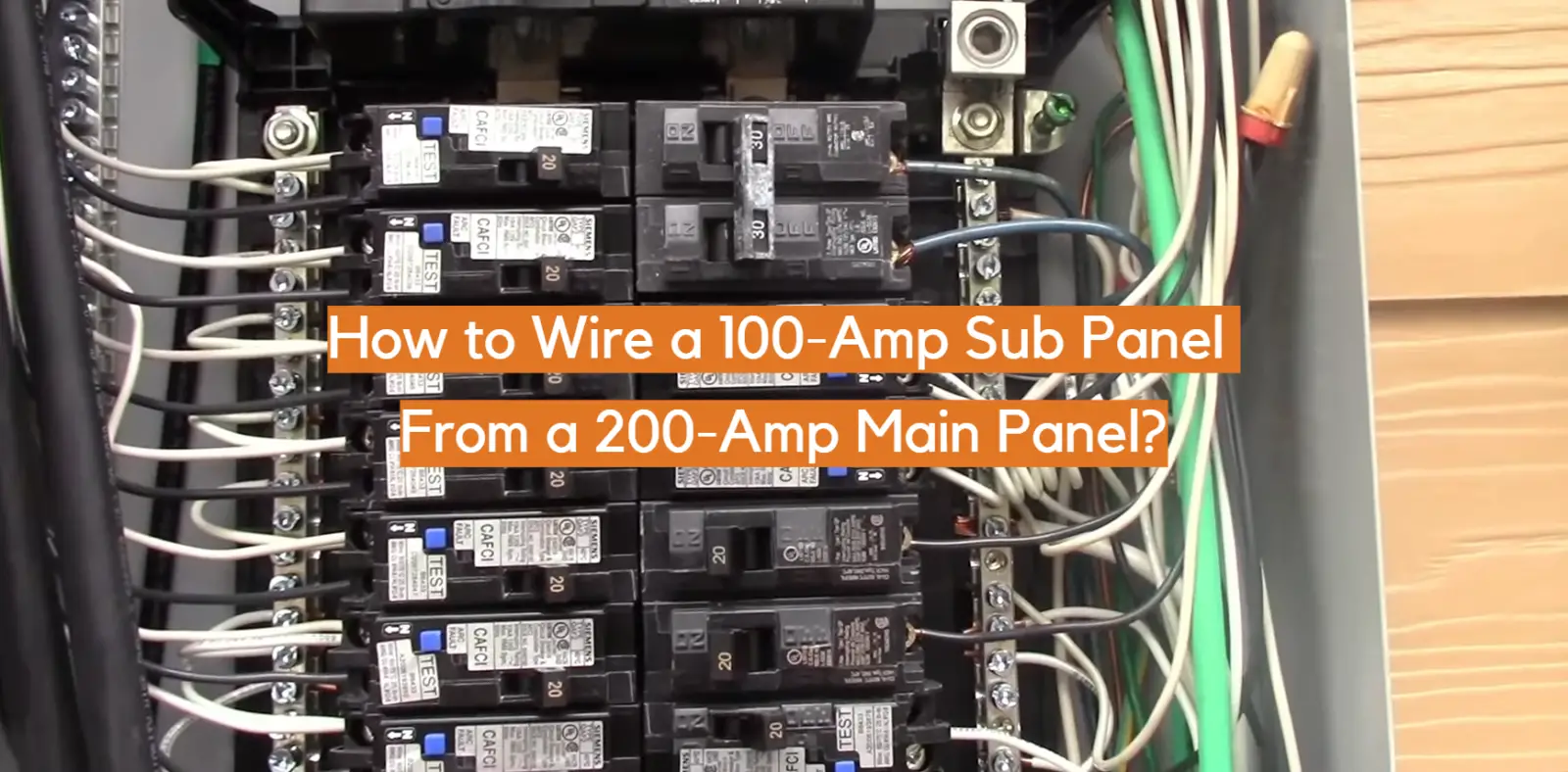




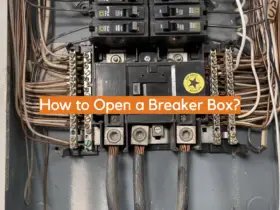
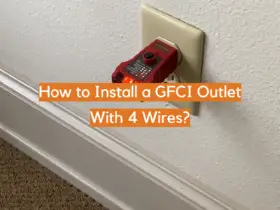

Leave a Reply